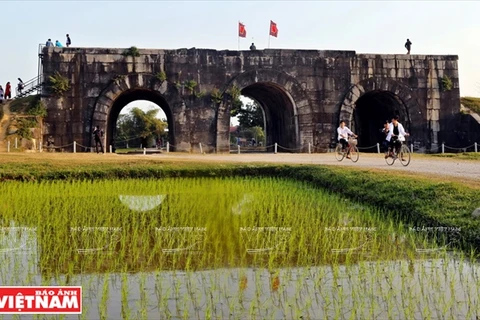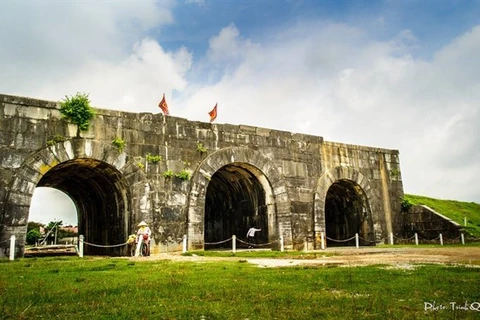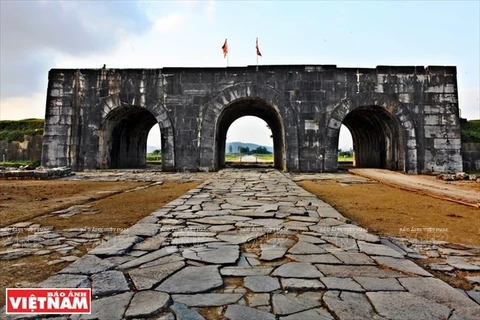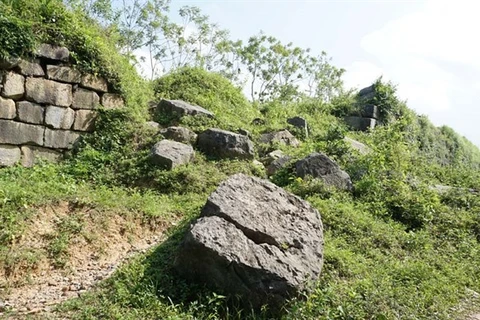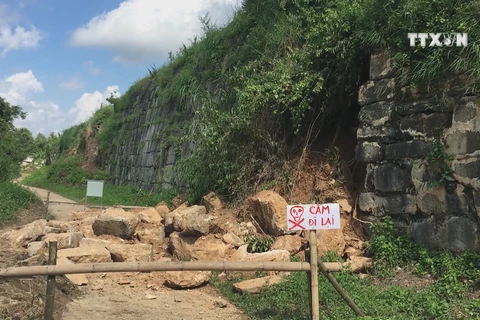Thanh Hoa (VNA) – The Fund for Cultural Preservation of the US Embassy in Vietnam on October 26 presented an aid worth 92,500 USD for a project repairing the dome and southern gate of the Ho Dynasty Citadel in the central Thanh Hoa province.
The project, one of the 33 conservation projects selected out of the 106 proposals across the world, aims to raise awareness of local people about the conservation of the heritage.
Speaking at the ceremony to announce the aid, Vice Chairman of the provincial People’s Committee Pham Dang Quyen said the selection of the project showed a positive result in the cultural heritage preservation cooperation between Thanh Hoa province and the US Embassy in Vietnam.
It also consolidates and deepens the Vietnam-US friendship, he added. The project will run through mid-June 2019.
The southern gate, measuring 34.85m in length, 15m in depth and 10m in height, was built of large rectangular and crescent stones. It is one of the most attractive tourist destinations of the Ho Dynasty Citadel.
However, after 600 years, the area is facing serious erosion. At sites of erosion, large slabs have slid dozens of metres from the base of the wall.
The Ho Dynasty Citadel in Vinh Loc district was Vietnam’s capital under the Ho Dynasty (1398-1407). The dimensions of the citadel, which was built in 1397, are 870m by 883m.
It is the only in the country built entirely of stone that has remained nearly intact throughout the nation’s history.
According to experts, the structure is an outstanding example of a new style of construction for a Southeast Asian imperial city. It was recognised as a World Cultural Heritage site by UNESCO in 2011.-VNA
The project, one of the 33 conservation projects selected out of the 106 proposals across the world, aims to raise awareness of local people about the conservation of the heritage.
Speaking at the ceremony to announce the aid, Vice Chairman of the provincial People’s Committee Pham Dang Quyen said the selection of the project showed a positive result in the cultural heritage preservation cooperation between Thanh Hoa province and the US Embassy in Vietnam.
It also consolidates and deepens the Vietnam-US friendship, he added. The project will run through mid-June 2019.
The southern gate, measuring 34.85m in length, 15m in depth and 10m in height, was built of large rectangular and crescent stones. It is one of the most attractive tourist destinations of the Ho Dynasty Citadel.
However, after 600 years, the area is facing serious erosion. At sites of erosion, large slabs have slid dozens of metres from the base of the wall.
The Ho Dynasty Citadel in Vinh Loc district was Vietnam’s capital under the Ho Dynasty (1398-1407). The dimensions of the citadel, which was built in 1397, are 870m by 883m.
It is the only in the country built entirely of stone that has remained nearly intact throughout the nation’s history.
According to experts, the structure is an outstanding example of a new style of construction for a Southeast Asian imperial city. It was recognised as a World Cultural Heritage site by UNESCO in 2011.-VNA
VNA

